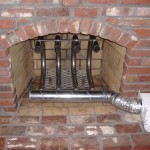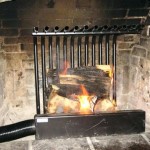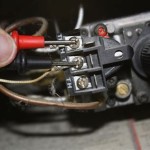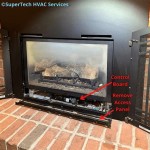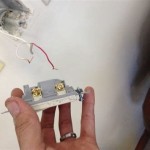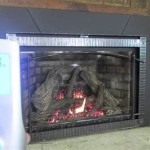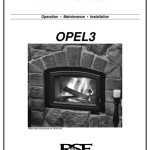Liquid Propane Fireplaces: A Comprehensive Guide
Liquid propane (LP) fireplaces offer a convenient and efficient alternative to traditional wood-burning fireplaces. They provide the ambiance and warmth of a fire without the mess, hassle, and environmental concerns associated with burning wood. This article will explore the various aspects of LP fireplaces, including their benefits, types, installation, maintenance, and safety considerations.
The popularity of LP fireplaces stems from their ease of use and versatility. Unlike wood-burning fireplaces, they require no chopping, stacking, or storing of firewood. A simple flick of a switch or push of a button ignites the flames, and the heat output can be easily controlled. This makes them an attractive option for homeowners seeking a convenient and aesthetically pleasing heating solution. Furthermore, LP fireplaces can be installed in a variety of locations, including homes without existing chimneys.
Benefits of Liquid Propane Fireplaces
LP fireplaces offer a multitude of advantages that contribute to their growing appeal. These benefits range from environmental considerations to practical convenience, making them a compelling choice for many homeowners.
One significant advantage is their environmental friendliness. LP is a cleaner-burning fuel than wood, producing fewer emissions of harmful pollutants such as particulate matter, carbon monoxide, and nitrogen oxides. This contributes to improved air quality both indoors and outdoors. The reduced environmental impact makes LP fireplaces a more sustainable heating option, aligning with growing concerns about environmental responsibility.
Convenience is another key benefit. LP fireplaces are incredibly easy to operate. With electronic ignition systems, starting a fire is as simple as flipping a switch or pressing a button. The flame height and heat output can be adjusted with ease, providing precise control over the ambiance and temperature of the room. Furthermore, there is no need to clean up ashes or deal with the mess associated with wood-burning fireplaces.
LP fireplaces also offer installation flexibility. They can be installed in homes without existing chimneys or gas lines. Vent-free models, which do not require a chimney or flue, are particularly versatile and can be placed in almost any room. Vented models, which require a chimney or vent, offer higher heat output and a more realistic flame appearance. This flexibility makes LP fireplaces an adaptable heating solution for a wide range of homes.
Cost-effectiveness can also be a factor. While the initial cost of an LP fireplace may be higher than a wood-burning fireplace, the long-term operating costs can be lower. LP burns more efficiently than wood, and there is no need to purchase or store firewood. Furthermore, LP fireplaces require less maintenance than wood-burning fireplaces, reducing the overall cost of ownership.
Types of Liquid Propane Fireplaces
The market offers diverse types of LP fireplaces designed to meet varied aesthetic preferences, installation requirements, and heating needs. Understanding these different types is crucial for selecting the fireplace that best suits a specific home and lifestyle.
Vented LP Fireplaces: These fireplaces require a chimney or vent to exhaust combustion byproducts outside the home. They typically offer higher heat output and a more realistic flame appearance than vent-free models. Vented fireplaces can be further categorized into direct-vent and natural-vent models. Direct-vent fireplaces draw combustion air from outside, providing a sealed combustion system that is highly efficient and safe. Natural-vent fireplaces rely on the natural draft of the chimney to exhaust combustion byproducts. Vented models offer a traditional fireplace experience and are often chosen for their aesthetic appeal and heating performance.
Vent-Free LP Fireplaces: Vent-free fireplaces do not require a chimney or vent, making them easy to install in almost any room. They burn very efficiently, converting nearly all the fuel into heat. Because they release combustion byproducts into the room, vent-free fireplaces are equipped with oxygen depletion sensors (ODS) that shut off the gas supply if oxygen levels become too low. While vent-free fireplaces offer installation flexibility, they are typically recommended for supplemental heating and should be used in well-ventilated rooms. They are also subject to stricter regulations in some areas.
LP Fireplace Inserts: Fireplace inserts are designed to fit into existing wood-burning fireplaces. They offer the convenience and efficiency of an LP fireplace without the need for major construction. LP fireplace inserts can be either vented or vent-free, depending on the existing chimney and local regulations. They are a popular choice for homeowners who want to upgrade their existing fireplace to a more convenient and efficient heating solution.
LP Fireplace Stoves: These resemble traditional wood-burning stoves but operate on liquid propane. They offer a freestanding heating solution that can be placed in various locations. LP fireplace stoves are available in both vented and vent-free models and offer a combination of aesthetic appeal and efficient heating performance. They are often chosen for their rustic charm and ability to heat a specific area of the home.
Electric Fireplaces with LP Conversion Kits: While primarily electric, some electric fireplaces can be converted to run on LP using a conversion kit. These kits typically involve replacing the electric heating element with an LP burner assembly. Converting an electric fireplace to LP can offer greater heating efficiency and a more realistic flame appearance. It's crucial to use a conversion kit specifically designed for the fireplace model and to follow the manufacturer's instructions carefully.
Installation, Maintenance, and Safety
Proper installation, regular maintenance, and adherence to safety precautions are essential for ensuring the safe and efficient operation of an LP fireplace. These aspects are critical for maximizing the longevity of the fireplace and preventing potential hazards.
Installation: It is highly recommended that an LP fireplace be installed by a qualified professional. A certified gas technician will ensure that the fireplace is properly connected to the LP gas supply, that the venting system is functioning correctly (if applicable), and that all safety regulations are followed. Improper installation can lead to gas leaks, carbon monoxide poisoning, and other serious hazards. Local building codes and regulations should be consulted before commencing installation to ensure compliance. Vented fireplaces require careful planning to ensure proper venting, while vent-free fireplaces need adequate ventilation in the room.
Maintenance: Regular maintenance is crucial for keeping an LP fireplace operating safely and efficiently. This includes cleaning the burner assembly, checking for gas leaks, and inspecting the venting system (if applicable). The frequency of maintenance will depend on the usage of the fireplace and the specific model. A qualified technician should perform a thorough inspection and cleaning at least once a year. Regular maintenance can prevent malfunctions, extend the lifespan of the fireplace, and ensure optimal performance.
Safety Considerations: LP fireplaces are generally safe when properly installed and maintained. However, it is essential to be aware of potential safety hazards and take appropriate precautions. Carbon monoxide detectors should be installed in the vicinity of the fireplace to provide early warning of carbon monoxide buildup. Never block or obstruct the vents of a vented fireplace, as this can lead to carbon monoxide poisoning. The ODS (oxygen depletion sensor) in vent-free fireplaces should be tested regularly to ensure it is functioning correctly. Flammable materials should be kept away from the fireplace to prevent fire hazards. Regularly inspect the gas supply lines for leaks and ensure that the gas shut-off valve is easily accessible in case of an emergency. Proper operation of the fireplace, as outlined in the manufacturer's instructions, should always be followed.
In addition to the above, ensure proper ventilation in the room, especially when using vent-free models. Provide adequate airflow to prevent the buildup of combustion byproducts. Never use the fireplace as a primary heating source unless it is specifically designed for that purpose. Be mindful of children and pets around the fireplace, and install a safety screen to prevent accidental burns. Familiarize yourself with the emergency procedures in case of a gas leak or fire. By adhering to these safety considerations, homeowners can enjoy the warmth and ambiance of an LP fireplace with peace of mind.
LP fireplaces represent a modern and convenient heating solution, offering numerous benefits over traditional wood-burning fireplaces. The key to enjoying a safe and efficient LP fireplace lies in selecting the right type, ensuring proper installation, performing regular maintenance, and adhering to safety guidelines. By understanding these aspects, homeowners can make informed decisions and maximize the benefits of their LP fireplace.

Duluth Forge 43 5 In Black Ventless Natural Or Liquid Propane Gas Fireplace The Fireplaces Department At Com

Liquid Propane Gas Fireplaces At Com

Allen Roth 49 5 In Walnut Ventless Natural Or Liquid Propane Gas Fireplace The Fireplaces Department At Com

Pleasant Hearth 42 In Cherry Ventless Liquid Propane Gas Fireplace The Fireplaces Department At Com

Propane Gas Fireplace Challenges With Infrequent Use

Design Specialties 36 Compact 20 000 Btu Vent Free Liquid Pro Us Fireplace

Duluth Forge 44 In Black Ventless Natural Or Liquid Propane Gas Fireplace The Fireplaces Department At Com

41 Stony Creek Vent Free Fireplace Liquid Propane Millivolt Ignition

Direct Vent Gas Fireplace Insert With Intellifire Touch Ignition Syste Wood Majestic

Allen Roth 49 5 In Walnut Ventless Natural Or Liquid Propane Gas Fireplace The Fireplaces Department At Com
Related Posts

